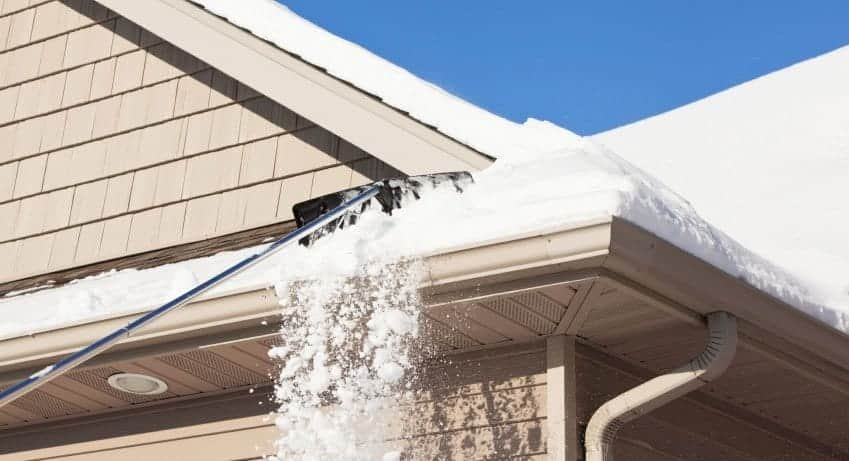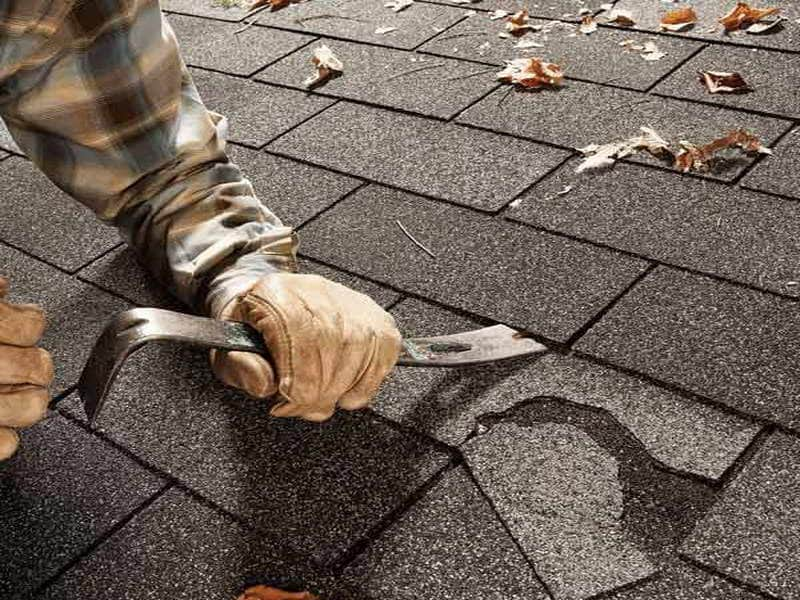Why You Need to Remove Snow from Your Roof

In the thick of winter when the snow storms come one after the other and temps are frigid, that buildup of snow on your roof could be very dangerous. Not only does it pose a threat to the safety of the occupants; it also poses a threat to the integrity of your roof. You could experience leaks at best and a cave-in at worst. Why risk it? Get the snow off your roof before that can happen.

If you have a quality roof, you know your roof can take a lot of abuse. However, there are some things that are too much to bear – literally – for any roof. Snow is surprisingly heavy, totaling several hundred pounds that can be sandwiched with ice to make it even more destructive. This heavy mixture can cave in a portion of your roof, especially if there are weak spots to begin with.
How Much Snow Can Your Roof Take?
This obviously depends on the type and age of your roof. Flat roofs are much more at risk than angled roofs, for example. The exact breaking point of your roof will also take into account its age, the ratio of water to snow, whether you have ice dams or not, what kind of snow has accumulated (fluffy or wet), and any structural problems that may have existed prior to the snowfall, says Bob Vila. Got a sloped roof? The odds are more in your favor, as the snow accumulation on your roof isn’t as much as the ground snow load because some of it is able to fall off the roof due to gravity. However, this doesn’t mean it can’t still cause pressure on the roof. Got a flat roof? You’re in more of a precarious position because your chance for structural damage is greater due to the fact that the snow can only pile up straight on, not off the angles.
This force is known as snow loading, which is basically the downward force that’s exerted on your home by the weight of the snow. This effect is compounded if you have inadequate insulation and ventilation, three layers or more of re-roofing, or sub-par previous repairs. Snow loading can be affected by several things, such as your roof’s pitch, how strong the wind drifts are, any smaller structures like sheds that get hit by larger dumps of snow from a roof higher above, and how many valleys are present on your roof. In addition, the type of roof you have can affect the snow load. For example, asphalt shingles aren’t as good at melting snow as metal ones are.
Solutions
As part of your winter maintenance plan, you need to keep your roof free from snow buildup, and to do that you need to hire a professional or do it yourself. Since this job involves getting up on a ladder in many cases or even climbing onto the roof, it’s recommended you rely on a professional roofer to handle this task. If you decide to DIY, you’ll need to pick up some supplies from the hardware store. One thing you’ll need is a roof rake, which is a long-handled extendable tool that can rake excessive snow off your roof. Most are made of aluminum, with extensions up to 20 feet or more. The longer the better, so you don’t have to climb up high on a ladder or get on the roof. If you don’t have the right equipment, such as extendable ladders and roof rakes, you’re probably best off hiring a pro. They have the necessary safety harnesses, stabilizing ladders and other equipment to get the job done safely.
It’s best to get prepared now at the beginning of winter rather than halfway through when the accumulations are at their highest.
















